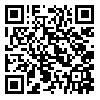سه شنبه 6 آبان 1404
دوره 6، شماره 1 - ( 11-1398 )
جلد 6 شماره 1 صفحات 15-9 |
برگشت به فهرست نسخه ها
Download citation:
BibTeX | RIS | EndNote | Medlars | ProCite | Reference Manager | RefWorks
Send citation to:



BibTeX | RIS | EndNote | Medlars | ProCite | Reference Manager | RefWorks
Send citation to:
Izadi S, Ahmadi M, Poursadeghfard M. Predictors and Conversion Rate of Clinically Isolated Syndrome to Clinically Definite Multiple Sclerosis: A Follow-up Study in Patients Living in the Southern Part of Iran. Caspian J Neurol Sci 2020; 6 (1) :9-15
URL: http://cjns.gums.ac.ir/article-1-302-fa.html
URL: http://cjns.gums.ac.ir/article-1-302-fa.html
Predictors and Conversion Rate of Clinically Isolated Syndrome to Clinically Definite Multiple Sclerosis: A Follow-up Study in Patients Living in the Southern Part of Iran. مجله علوم اعصاب کاسپین. 1398; 6 (1) :9-15
چکیده: (3205 مشاهده)
Background: Clinical course of Clinically Isolated Syndrome (CIS) is variable, and identifying patients who will eventually develop Multiple Sclerosis (MS) is essential.
Objectives: To assess the conversion rate of CIS to Clinically Definite Multiple Sclerosis (CDMS) and its predictors in southern Iran.
Materials & Methods: A total of 143 CIS patients registered to Fars Multiple Sclerosis Society (FMSS) were enrolled in the study from 2006 until 2012, and all of them were followed for 5 years. Also, their demographic and MRI data were recorded. The obtained data were analyzed by univariate and multivariable Cox regression models in SPSS v. 17. P<0.05 was considered statistically significant.
Results: About 26.6% of patients progressed to MS after a mean duration of 3.4±1.1 years. The conversion rate was 27.6% in patients presented with optic neuritis, and 25.6% in patients presented with spinal cord problems. Although it was not statistically significant (P=0.23), the mean age of the patients who converted to MS was lower at the onset of the presentation (27.6 vs. 29.4 years). In patients who had 3 or more MRI lesions, the conversion rate was 49.2%; however, it was only 9.8% in subjects who had fewer than 3 lesions (OR=8.95, 95% CI=3.69–21.7, P <0.001). Women
had higher conversion rate though it was not statistically significant (OR=2.09, 95% CI=0.57–7.64, P=0.26).
Conclusion: Our results supported this supposition that the number of MRI lesions at baseline can be used as a predictor of CIS conversion to MS.
Objectives: To assess the conversion rate of CIS to Clinically Definite Multiple Sclerosis (CDMS) and its predictors in southern Iran.
Materials & Methods: A total of 143 CIS patients registered to Fars Multiple Sclerosis Society (FMSS) were enrolled in the study from 2006 until 2012, and all of them were followed for 5 years. Also, their demographic and MRI data were recorded. The obtained data were analyzed by univariate and multivariable Cox regression models in SPSS v. 17. P<0.05 was considered statistically significant.
Results: About 26.6% of patients progressed to MS after a mean duration of 3.4±1.1 years. The conversion rate was 27.6% in patients presented with optic neuritis, and 25.6% in patients presented with spinal cord problems. Although it was not statistically significant (P=0.23), the mean age of the patients who converted to MS was lower at the onset of the presentation (27.6 vs. 29.4 years). In patients who had 3 or more MRI lesions, the conversion rate was 49.2%; however, it was only 9.8% in subjects who had fewer than 3 lesions (OR=8.95, 95% CI=3.69–21.7, P <0.001). Women
had higher conversion rate though it was not statistically significant (OR=2.09, 95% CI=0.57–7.64, P=0.26).
Conclusion: Our results supported this supposition that the number of MRI lesions at baseline can be used as a predictor of CIS conversion to MS.
| بازنشر اطلاعات | |
 | این مقاله تحت شرایط Creative Commons Attribution-NonCommercial 4.0 International License قابل بازنشر است. |



